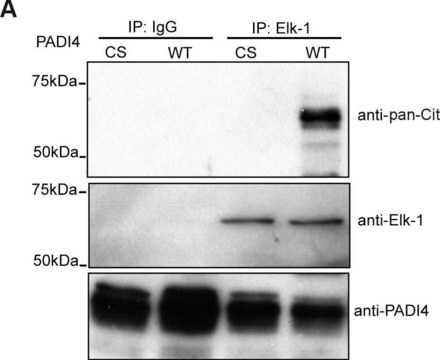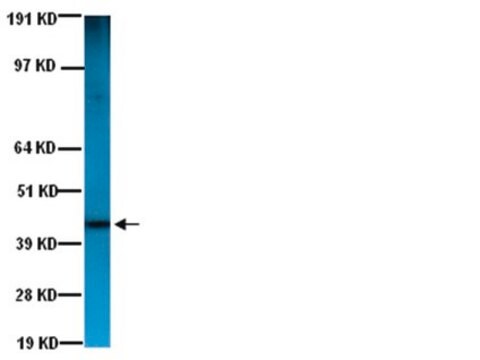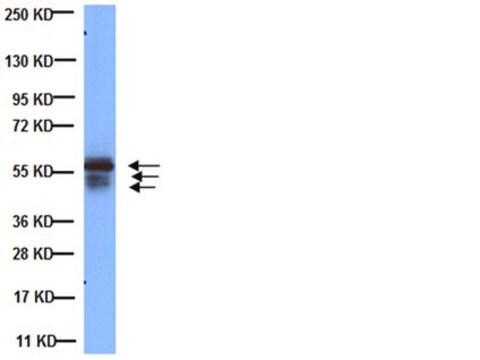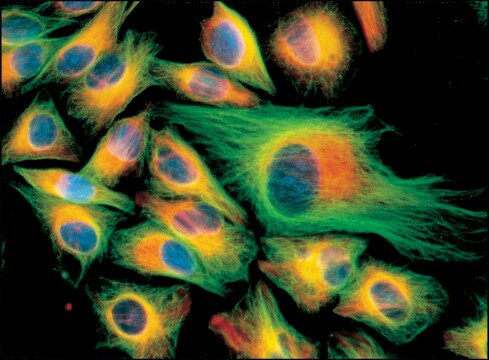MAB1612
Anti-Cytokeratin Epithelial Antibody, clone AE1
clone AE1, Chemicon®, from mouse
Synonyme(s) :
Anti-CARD2, Anti-CK8, Anti-CYK8, Anti-K2C8, Anti-K8, Anti-KO
About This Item
Produits recommandés
Source biologique
mouse
Niveau de qualité
Forme d'anticorps
purified immunoglobulin
Type de produit anticorps
primary antibodies
Clone
AE1, monoclonal
Espèces réactives
mouse, chicken, human, rabbit, bovine, rat
Fabricant/nom de marque
Chemicon®
Technique(s)
immunohistochemistry: suitable (paraffin)
Isotype
IgG
Numéro d'accès NCBI
Numéro d'accès UniProt
Conditions d'expédition
wet ice
Modification post-traductionnelle de la cible
unmodified
Informations sur le gène
human ... KRT1(3848)
rat ... Krt19(360626)
Spécificité
Immunogène
Application
Western Blotting: AE1 recognizes LMW cytokeratins from the acidic subfamily including: Clone AE1 recognises the 56.5, 50, 50′, 48 and 40kD human cytokeratins of the acidic subfamily.
Optimal working dilutions must be determined by end user.
Cell Structure
Cytokeratins
Liaison
Forme physique
Stockage et stabilité
Autres remarques
Informations légales
Clause de non-responsabilité
Vous ne trouvez pas le bon produit ?
Essayez notre Outil de sélection de produits.
En option
Mention d'avertissement
Danger
Mentions de danger
Conseils de prudence
Classification des risques
Repr. 1B
Code de la classe de stockage
6.1D - Non-combustible acute toxic Cat.3 / toxic hazardous materials or hazardous materials causing chronic effects
Classe de danger pour l'eau (WGK)
nwg
Point d'éclair (°F)
Not applicable
Point d'éclair (°C)
Not applicable
Certificats d'analyse (COA)
Recherchez un Certificats d'analyse (COA) en saisissant le numéro de lot du produit. Les numéros de lot figurent sur l'étiquette du produit après les mots "Lot" ou "Batch".
Déjà en possession de ce produit ?
Retrouvez la documentation relative aux produits que vous avez récemment achetés dans la Bibliothèque de documents.
Notre équipe de scientifiques dispose d'une expérience dans tous les secteurs de la recherche, notamment en sciences de la vie, science des matériaux, synthèse chimique, chromatographie, analyse et dans de nombreux autres domaines..
Contacter notre Service technique









